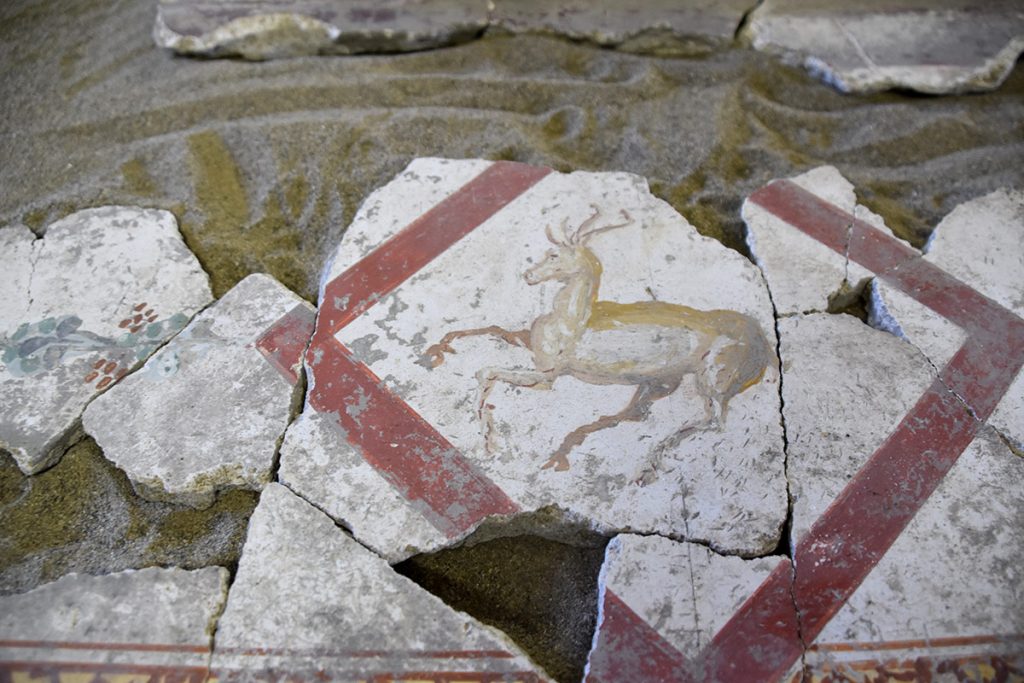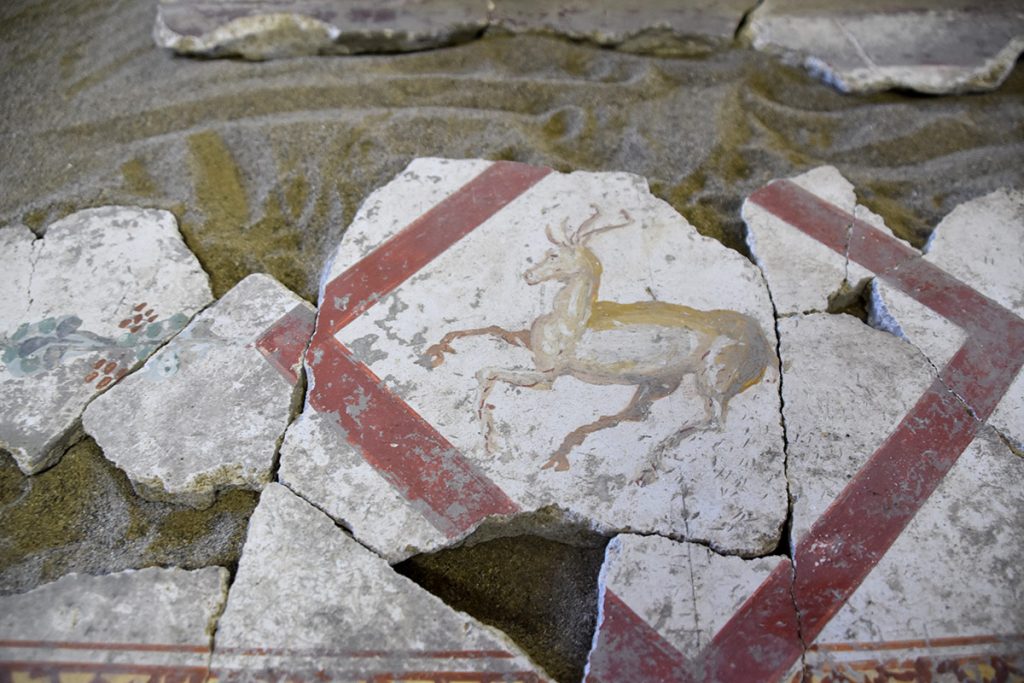A new machine called RePAIR can figure out how centuries-old fresco shards fit together—and even has robotic arms to reassemble them.
Archaeologists in Italy are working to develop a robot that uses A.I. to reconstruct ancient relics from their scattered shards.
RePAIR, or Reconstructing the Past: Artificial Intelligence and Robotics meet Cultural Heritage, is the name of the project, which was formally launched in 2021 and funded in part by grant money from the European Union. The goal, according to its website, is to “develop a ground-breaking technology to virtually eliminate one of the most labor-intensive and frustrating steps in archaeological research, namely the physical reconstruction of shattered artworks.”

 Fresco shards excavated from Pompeii. Courtesy of the RePAIR Project.
Fresco shards excavated from Pompeii. Courtesy of the RePAIR Project.
In other words, RePair technology is designed to solve complex puzzles, the pieces of which may be broken, faded, dispersed, or missing altogether. Its A.I. software could analyze the myriad fragments of, say, a centuries-old Roman vase and figure out how they fit together; then, a pair of robotic arms would reassemble them.
“We wanted to save the archaeologists precious time that they waste on assembling fragments, which sometimes takes years and sometimes never succeeds,” one of the RePair’s founding scientists, Ohad Ben-Shahar of Ben-Gurion University’s Department of Computer Science, told Haaretz.
Among the nascent project’s first targets is a pair of 2,000-year-old frescoes from the ancient Roman city of Pompeii, which was razed by the eruption of Mount Vesuvius in 79 C.E. One fresco originally lived on the ceiling of the House of the Painters at Work in the Insula of the Chaste Lovers, while the other came from the Schola Armaturarum.
Tens of thousands of the frescoes’ fragments were, like many other objects excavated from the site of Pompeii, preserved in layers of volcanic ash. However, after research, experts determined that rejoining those pieces would be virtually impossible for humans to accomplish, and so for decades, the shards have remained in a warehouse outside of Pompeii, all but forgotten.
The team behind RePAIR—which includes experts from the Ca’ Foscari University of Venice, the Ben-Gurion University of the Negev of Israel, and the Italian Institute of Technology, among other organizations—is currently in the process of training the software’s A.I. by feeding it 3D-scanned images of both individual shards and previously reconstructed clusters for analysis.
From there, the program will begin to rate each piece based on its size, shape, and illustration as pairs begin to form. Other members of the RePair team, meanwhile, are working on the mechanical hands.

Experts analyzing ancient shards from Pompeii with RePAIR. Courtesy of the RePAIR Project.
If all goes as planned, RePair will eventually be able to tackle meticulous projects almost entirely on its own, from scanning to assembly. “Our goal is to let the archaeologist return from the excavation site in the evening, toss all the fragments on the table, and the next morning receive the complete vessel after the robot has put it together overnight,” said Ben-Shahar.
Still, humans will continue to play an integral part in the process.
“The computer will present intermediate results to us as necessary, and will ask to consult with a human expert who will determine whether the result is good or whether the computer will have to be adjusted to help put it in the right direction,” added Ben-Shahar. “People have always built machines to help them. In our project, autonomous machines will be helped by people.”
RePAIR represents just one of many examples of experts turning to cutting-edge technology to preserve Pompeii and unlock its ancient mysteries. Archaeologists have been particularly reliant on iPads to understand objects uncovered at the site in recent years, and in 2022, the park tasked a robotic dog with patrolling the grounds.
Source: news.artnet.com





